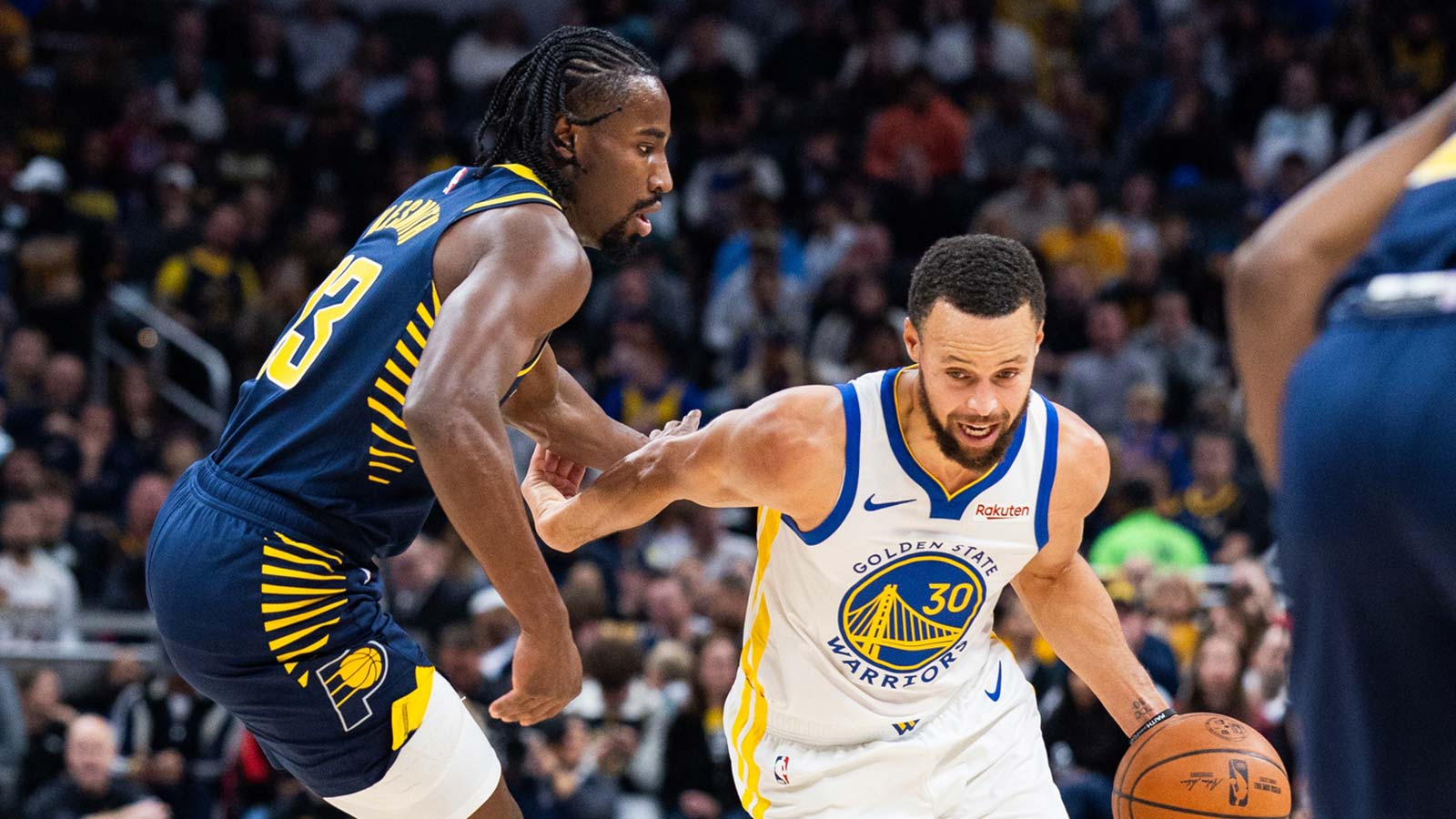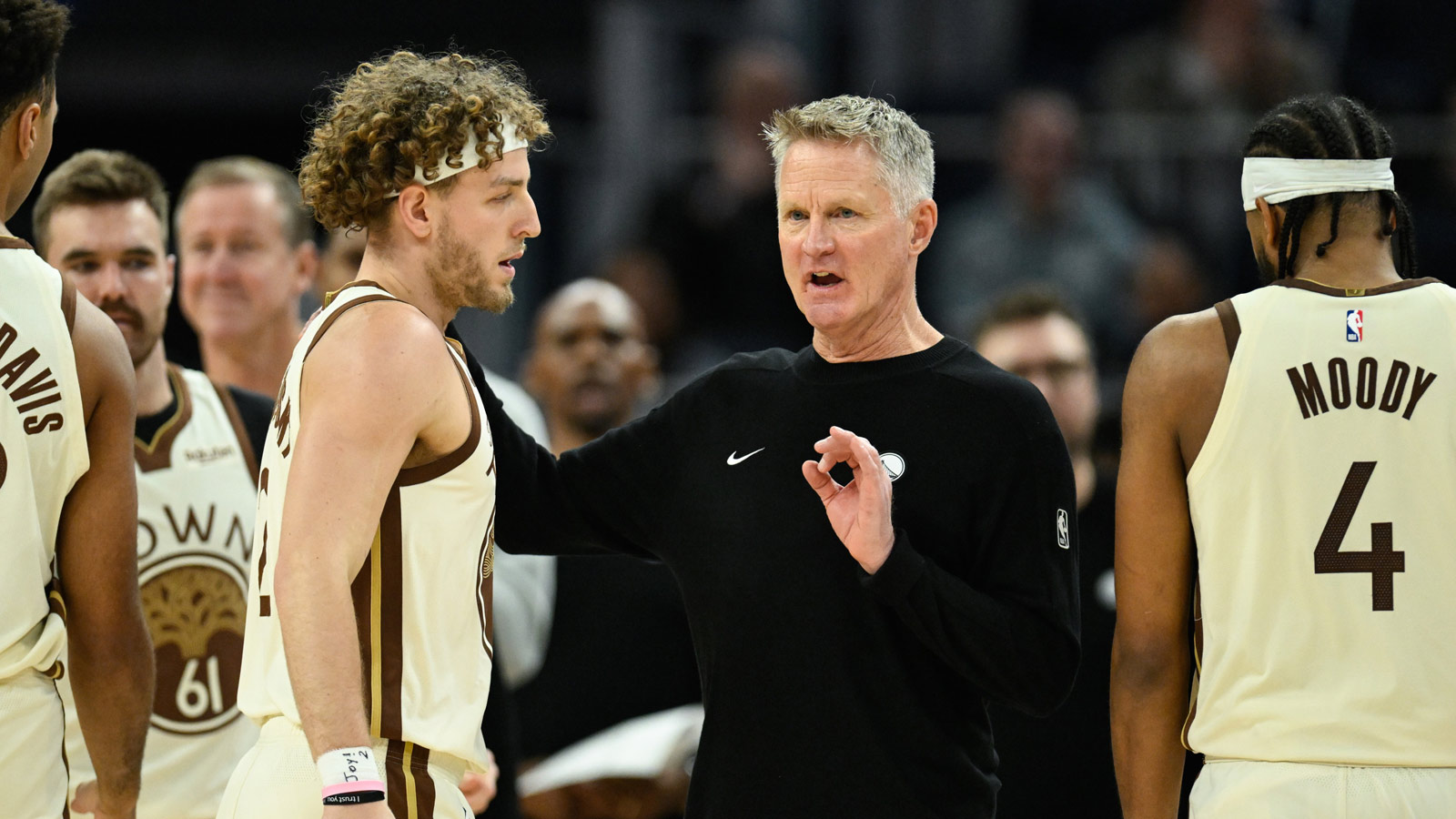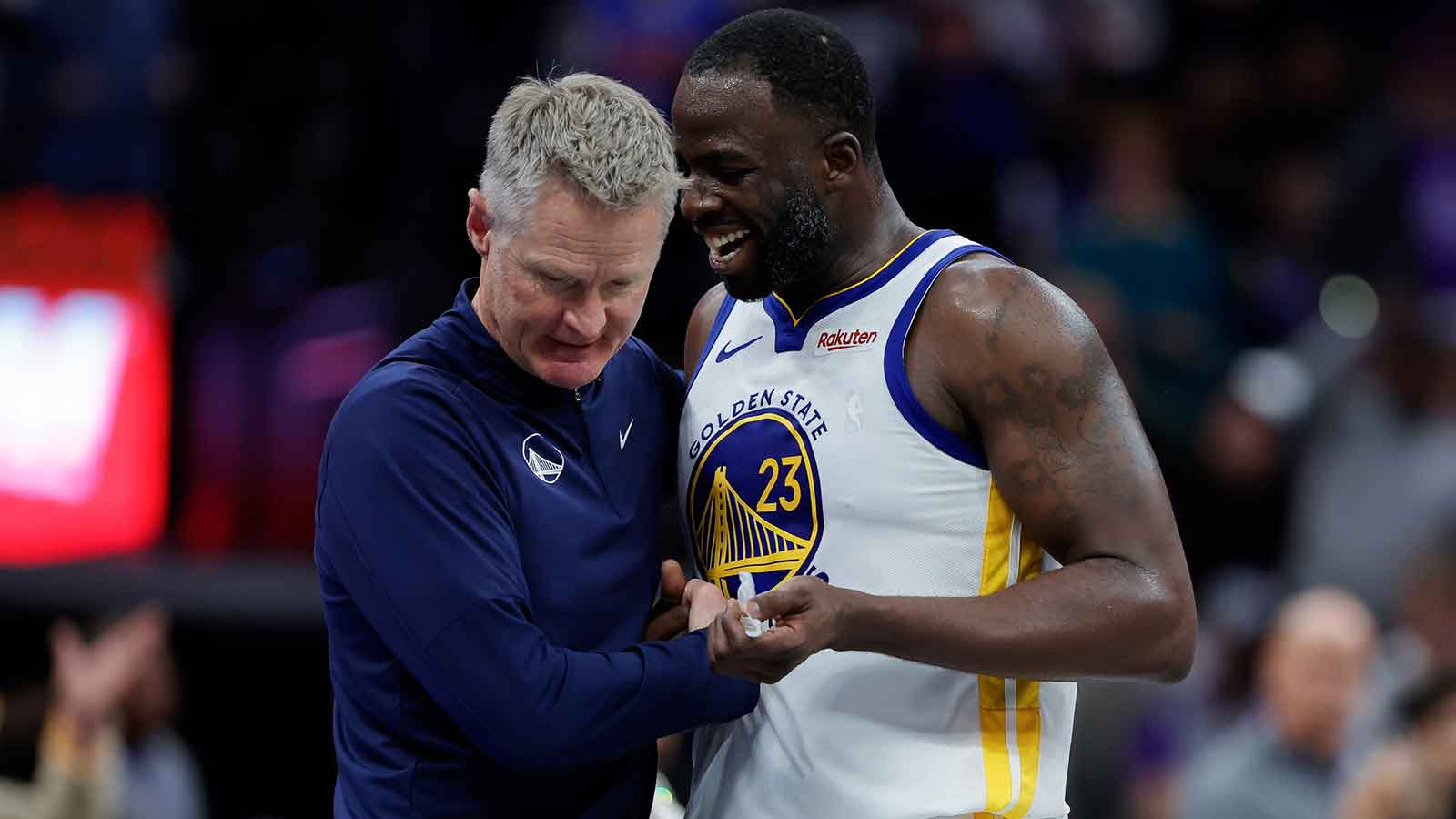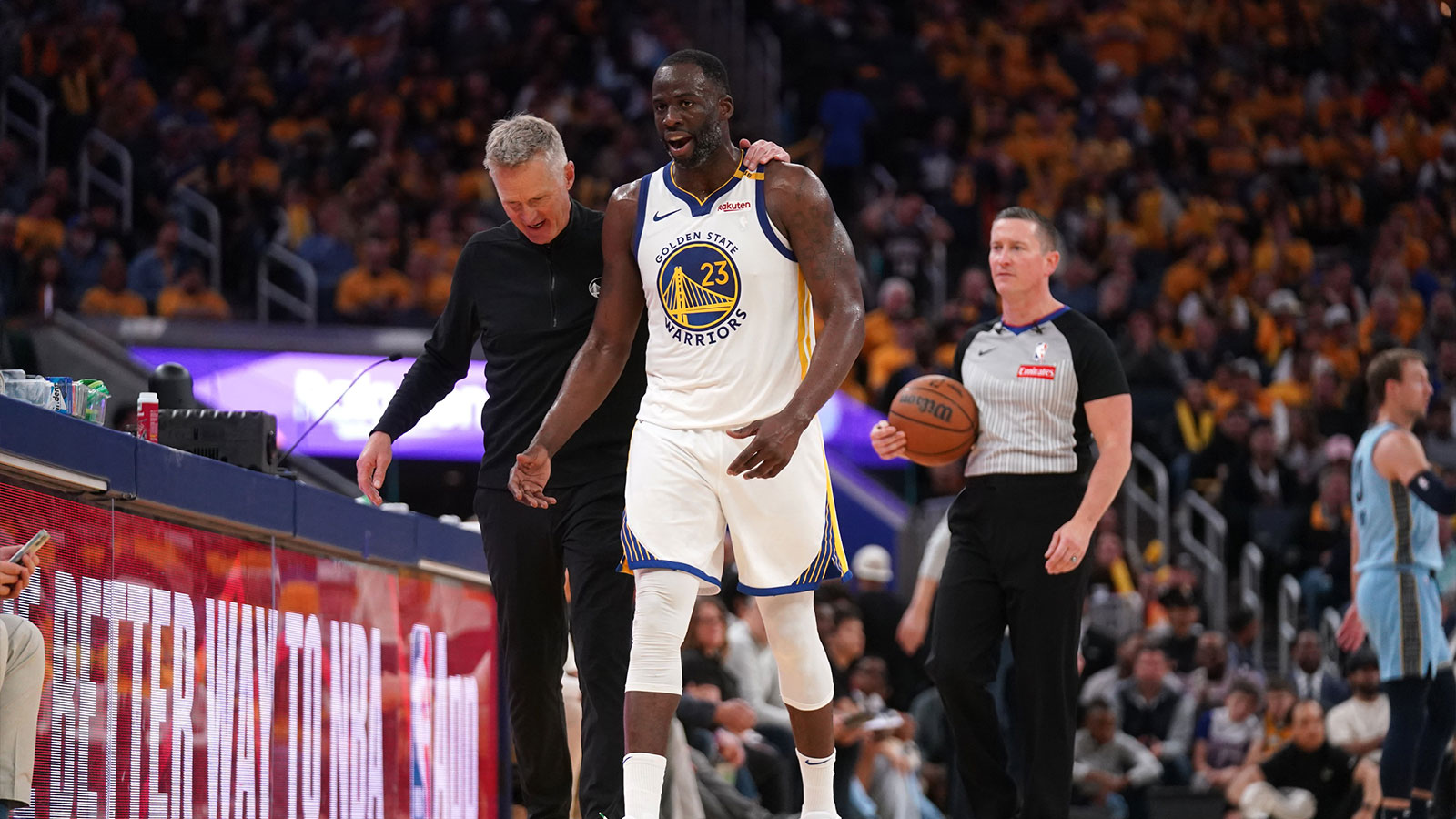The overarching theme in the Golden State Warriors' three losses this season has been pace. Despite being the favorites against the young Portland Trail Blazers, the Giannis Antetokounmpo-less Milwaukee Bucks, and the then-winless Indiana Pacers, what undid the Dubs in those games, beyond a lack of focus and discipline, was how fast each team played.
In the wake of the Warriors' underwhelming two-game Midwest road trip, Steve Kerr identified the X's-and-O's issues that blunted the Dubs' early-season momentum.
“The pace of the game is off the charts these days. It's been getting faster and faster, year after year. But I even think it's taken a leap this year in terms of style of play,” Kerr told reporters when asked what the team learned from the losses to Milwaukee and Indiana.
Early in the 2025-2026 season, the overwhelming trend across the league has been the speed at which teams are playing. Teams are implementing full-court presses at the highest rate in the player tracking era. The league average pace is at its highest (100.8) since 1973-1974, and the league average of 3-point attempts per game (37.3) ranks second most in history.
Basketball in the modern era has become hyper-accelerated by speed, athleticism, and shooting– that's no surprise to anyone. The Pacers and Oklahoma City Thunder, the two up-tempo, pace-oriented teams that won their way to the Finals, demonstrated how successful – and disruptive – that hyper-offense, hyper-aggressive defense can be.
But that growing trend has affected Golden State's style of play– namely, their usually stout and high-IQ defense.
How speed has disoriented the Warriors' defense
The overwhelming sentiment from the Warriors on their road defensive woes was how the communication was lacking on that end of the court. Part of it was due to a lack of focus, but Kerr stressed that the pace has caught their defensive game plans off guard.
“What I'm seeing is teams are spreading it out, playing as fast as possible, making it difficult to get to your coverages defensively,” Kerr continued. “The faster the actions, the more difficult it is for the defense to respond. I thought the pace of the Milwaukee and Indiana exposed some things we were doing defensively.”
Steve Kerr emphasized the league wide uptick in pace how it affected the Warriors’ in the two losses on the road:
“What I’m seeing is teams are spreading it out, playing as fast as possible, and making it difficult to get to your defensive coverages.” pic.twitter.com/EYbORTZSuu
— Kenzo Fukuda (@kenzofuku) November 3, 2025
The Warriors' defensive scheme relies heavily on its communication– making sure all five guys are on the same page. Their defensive principles, like their X-Out help defense recovery, their scram switches on mismatched pick-and-rolls, and even simple things like occasional double teams, all rely on talking. But the faster pace means more time in transition. More transition means more chaos, which means more communication is necessary, as Moses Moody pointed out.
“Some of it, we just got to get on the same page,” Moody said after Monday's light practice. “We have different terminology, different principles that are changing with the change of the game. So everybody just has to be on the same page and communicate. If we're switching 1-through-5, then it might not have the same principles of if you're switching in a guard-to-guard screen in a regular situation. Small details like that, where we got to get on the same page.”
Warriors' center Quinten Post echoed Moody's sentiments.
“It's just a lot more chaos out there,” Post said. “The biggest thing for us is whatever we do defensively, we just got to do it with 100% effort. I think you get in the most trouble when you kind of are uncertain. If you should switch this or if you should stay home. That's where you give up a lot of points. But if we attack every play with 100% intensity, then it's okay if you make some mistakes.”

Does pace favor Golden State's offense?
While speed burned the Warriors' defense on the road, it doesn't change how they want to dictate the pace on offense. The principles there are to find early offense as much as possible with Curry creating controlled chaos – as the coaches call it “The Wash” – and to use ball movement, spacing, and cutting to create opportunities. And in conjunction with Jimmy Butler's more “deliberate” and calculated iso-ball style, the Warriors have multiple ways to attack a defense. Right now, it's about finding a balance between fast and slow.
“We found balance at the end of last year once we got Jimmy from playing with a little more deliberateness and spacing,” Kerr emphasized at the same press conference.
“The key is we want to throw the ball ahead and get a layup or get an open three– get the ball moving. And then when Jimmy gets it, now we get to our spots. It's kind of finding that sweet spot. Because we don't want to go away from the split cuts for Steph, and the ball movement, and the flow we've always played with. Part of this early season is finding that balance between all of those things.”
Golden State's offense has ebbed and flowed through the first seven games. The Dubs' 114.8 offensive rating ranks a mediocre 17th in the league. At the peak of its powers, when Butler's controlling the rhythm and Curry's finding his offense, you get games like against Memphis or Denver, with scores in the 130s. But when it's not working, and teams like the Blazers are dictating the pace of the game, you get letdowns and offensive slumps. It's a tricky balancing act, but as Kerr pointed out, scoring is only part of dictating pace.
“The pace of the games is now dictated by different factors,” Kerr said. “It's not just pushing the ball. It's crashing the offensive glass; it's building walls in transition, closing out to shooters. And the athletes are better, like in every sport. Athletes are bigger, stronger, faster, more skilled. And so defense has gotten more difficult.”
Warriors’ Steve Kerr talked about balancing the faster pace with Jimmy Butler’s deliberate style:
“We still want to play with pace, we still want to throw the ball ahead… it’s finding that sweet spot because we don’t want to go away from… the flow we’ve always played with.” pic.twitter.com/QNqGhh6sN9
— Kenzo Fukuda (@kenzofuku) November 3, 2025
What does pace mean for the wear-and-tear on the veterans?
The other thing that comes with a faster, more intense style of basketball is the mileage it adds to players, especially the veterans. Golden State is not a team built on spring chickens. Curry, Butler, Draymond Green, and Al Horford are much closer to their 40s than their 20s. Over the course of 82 games, the faster pace is bound to grind down on their bodies. It's a problem the Warriors were very much aware of entering this season. And with the league-wide uptick in pace, it's something they're continuing to discuss.
“We have to address that,” Kerr said when asked how pace affects the veterans' minutes. “We did today. I sat down with Mike and Rick Celebrini, Dray, Steph and Jimmy — the main three guys who are going to play heavy minutes. I mentioned it the other night, seven games in 12 days, five cities. Not an easy schedule. And I think it showed the last two games. We looked a half-step slow in a lot of ways. We're constantly collaborating with our players on this stuff. I'm collaborating with our performance team… It's not easy, but we'll do it collaboratively.”
Asked Steve Kerr about how the uptick in pace and tempo across the league affects the minutes on the Warriors’ veterans:
“We have to address that. We did today. I sat down with Mike and Rick Celebrini, Dray, Steph, and Jimmy… It’s not easy but we’ll do it collaboratively.” pic.twitter.com/3icRqCPH93
— Kenzo Fukuda (@kenzofuku) November 3, 2025
Kerr was asked a follow-up about the conclusions of that meeting between him, the star veteran core, the general manager, and the VP of Player Health and Performance.
“Not every back-to-back is the same,” Kerr said, emphasizing how the upcoming back-to-back should be easier than the midwest road trip because the travel is less arduous.
“The schedule isn't always going to be black and white in terms of when to sit a guy, when to rest a guy. Same thing with each guy's condition physically. Sometimes they're banged up, sometimes they're not. Sometimes, if you have three in four nights and the third game is coming off a day off, that bothers players more than the back-to-back, because it's three in four nights. Especially the older guys. These are all things we have to consider.”



















